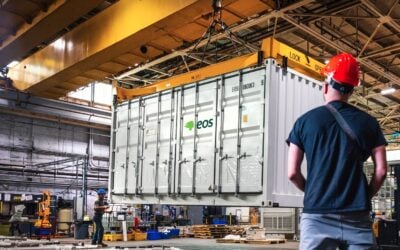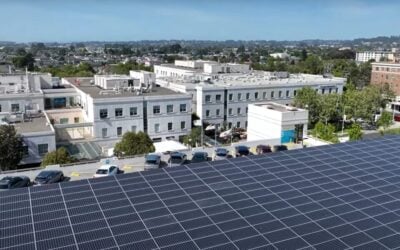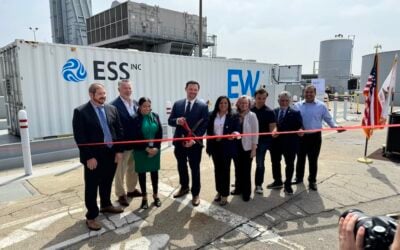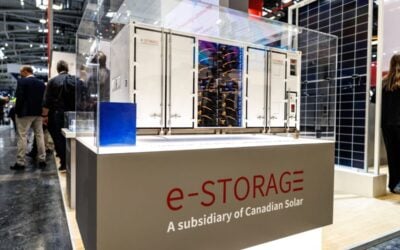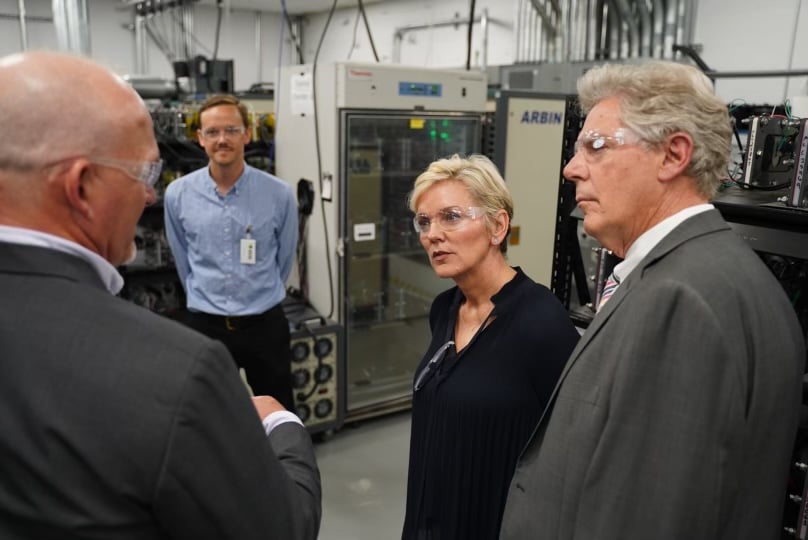
Eos Energy Enterprises has a total order backlog for its zinc battery-based energy storage of 389MWh, worth nearly US$100 million, but expects to only be able to recognise US$5 million in revenues for 2021.
The New Jersey-headquartered company makes battery energy storage systems (BESS) suitable for long-duration applications that require storage of energy for anything from three to 12 hours and reported its latest quarterly financial results last week, for Q2 2021. It listed on the NASDAQ exchange in November 2020, making this its third earnings release to date.
Enjoy 12 months of exclusive analysis
- Regular insight and analysis of the industry’s biggest developments
- In-depth interviews with the industry’s leading figures
- Annual digital subscription to the PV Tech Power journal
- Discounts on Solar Media’s portfolio of events, in-person and virtual
Although it said that the current backlog, which is worth about US$95.6 million as of 11 August, would place it on-track to achieve its US$50 million revenue target for this year, in reality it only expects to be able to count shipments and revenues of about U$5 million for the full year. This was largely due to delays owing to COVID-19, CEO Joe Mastrangelo said in an earnings call, although around US$2 million has been shipped already.
Permitting, grid connections and finalising the UL certifications process were all among the different aspects of delays and Mastrangelo said that a large number of projects expected to be equipped with Eos systems this year have been pushed back out to 2022. He did point out that the company has now completed UL testing for standards UL9540A for battery module safety and UL1973 for overall systems certification. It is now also undergoing manufacturing certification that will allow the company to start shipping UL-certified products in the third quarter of this year.
The company recorded a quarterly net loss of US$54,043,000, which was partly to do with ongoing expenses associated with buying Hi-Power, the manufacturing joint venture (JV) the company had started with nuclear engineering company Holtec. Eos had to spend just over US$22.5 million, but acquired the remaining 51% of Hi-Power including manufacturing facilities.
Koch money is ‘validation’, CEO says
Nonetheless, CEO Mastrangelo said that a recent investment from Koch Strategic Platforms of US$100 million was a “great validation” for the company and how it wants to deliver its technology into the marketplace. Koch had previously made an equity investment into Eos worth US$50 million. The company finished the quarter ending 30 June with around US$75 million in cash, plus the money invested by Koch.
The order book does certainly appear to be growing rapidly, with the company reporting an order backlog of about US$50.5 million back in May. It now has orders from customers all over the world, although the majority are in the US. The latter comprise 119MWh of booked orders in Texas’ ERCOT market, 163MWh in California and 87MWh in the northeast US, with much smaller orders for microgrid developers in Africa (3MWh), renewables developers in India (4MWh) and a 19MWh oil refinery project in Greece, Europe.
Eos is seeking to perfect the manufacturing processes of its Gen 2.3 systems, with infrared frame welding apparently the trickiest aspect and is preparing to finalise a production plan and ramp up manufacturing for its next, third-generation iteration, the Z3. It aims to reach 800MWh of production capacity in total during the next quarter and expand its engineering, software and systems development teams.
In July, US Secretary of Energy Jennifer Granholm chose to visit Eos’ labs in New Jersey together with Congressman Frank Pallone on the occasion of launching the Department of Energy’s ‘Earthshot’ initiative — offering funding in the form of grants and loans for promising long-duration energy storage technologies.
The DoE wants to use several rounds of Earthshot programmes to help commercialise and scale up long-duration energy storage, green hydrogen and other potential key clean energy technologies. The long-duration Earthshot has a target to reduce the cost of energy storage technologies which can store energy for more than 10 hours 90% by 2030.

